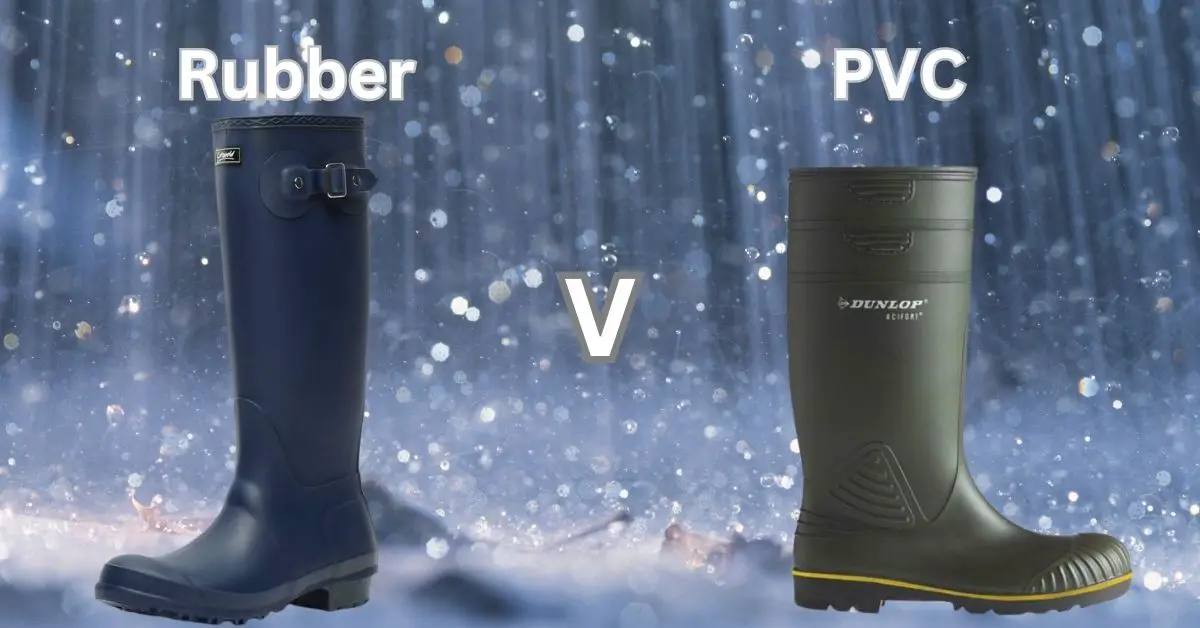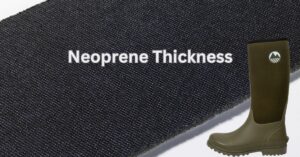Comparing Rubber And PVC Rain Boots
As we delve into the world of rain boots, we encounter two prominent materials — rubber and PVC (Polyvinyl Chloride). Each material comes with its unique set of properties that significantly impacts the quality, durability, and comfort of the rain boots made from them. Let’s embark on a detailed comparison of these materials to aid your decision-making process for your next pair of rain boots.
Material Composition and Durability
Rubber, a naturally occurring material, possesses superior elasticity and durability. Rain boots made from rubber are incredibly resistant to wear and tear, making them a popular choice for those seeking longevity. Rubber also offers excellent waterproofing capabilities, a crucial element in rain boots.
On the other hand, PVC, a synthetic plastic polymer, is a cost-effective material choice for rain boots. Though not as durable as rubber, PVC rain boots provide decent waterproofing. These boots are best suited for light use, as intense activities could lead to faster wear and tear.
Comfort and Fit
Rubber rain boots tend to provide a higher level of comfort due to their inherent flexibility. This flexibility allows for a better fit, as the boot can adapt to the contours of your feet more naturally.
In contrast, PVC rain boots are generally stiffer due to their synthetic composition. Although they might not offer the same level of comfort as rubber boots, modern manufacturing processes have enhanced their comfort level to a considerable degree.
Environmental Impact
When we analyze the environmental impact of these materials, rubber rain boots are more eco-friendly. Natural rubber is biodegradable and leaves a smaller carbon footprint during its manufacturing process.
In contrast, PVC is a petroleum-based product, and its production releases harmful chemicals into the environment. However, advances in recycling technologies have begun to reduce the environmental impact of PVC.
Maintenance and Care
Both rubber and PVC rain boots require routine maintenance to prolong their lifespan. Rubber boots need to be cleaned and dried thoroughly to prevent them from drying out or cracking. Applying a silicone spray can also extend their lifespan.
For PVC boots, regular cleaning to remove grime is recommended. Keeping them away from heat sources helps prevent the material from degrading.
Price Point
The price point is another factor where rubber and PVC rain boots differ significantly. Rubber boots tend to be more expensive due to their superior durability and comfort. However, PVC boots are a much more budget-friendly option, offering decent quality at a lower price.
Conclusion
In conclusion, both rubber and PVC rain boots have their advantages. Rubber boots excel in durability and comfort, making them an excellent choice for those who prioritize quality and longevity. On the other hand, PVC rain boots offer an affordable alternative with decent performance, perfect for occasional use.
Deciding between rubber and PVC rain boots ultimately comes down to your specific needs, usage frequency, and budget. With this comprehensive comparison, we hope to have given you the insights needed to make an informed decision.







